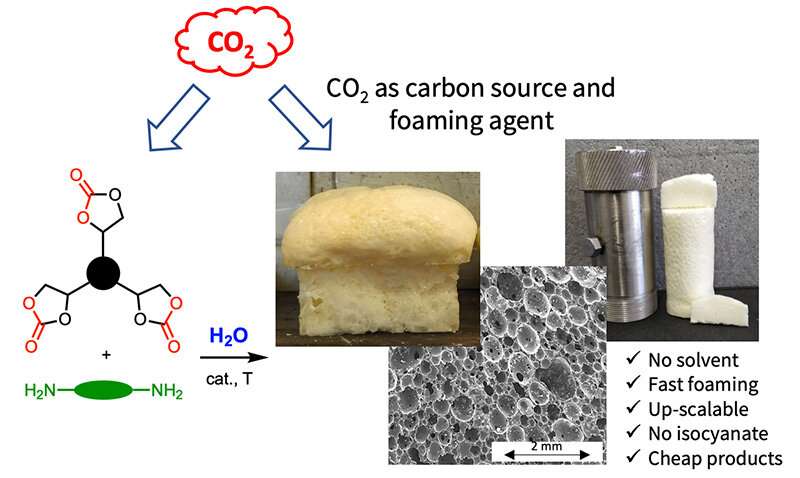Spray-Applied Pipeline Coatings: Enhancing Durability with Polyurea
The network of pipelines is crucial for transporting oil and gas along with necessary resources like water efficiently and safely over long distances. As time passes in operation, exposure to unforgiving factors such as corrosion and extreme temperatures, along with exposure to various chemicals, can cause damage to the pipelines, which may result in expensive repair work or even complete replacement. One effective remedy to combat these challenges involves utilizing spray-applied polyurea coatings, which serve as a high-quality protective layer, ensuring a seamless and durable shield against wear and corrosion, thus prolonging the lifespan of the pipelines.
Spray on coatings are used to coat the inside or outside pipelines to shield against corrosion and harm without needing several layers or extended drying periods seen with conventional coating methods. Polyurethane-based sprays on coatings are known for their application process and fast drying time compared to traditional coating options. Making them a popular choice for projects where speed is of the essence in getting pipelines back into operation swiftly.
Due to their special chemical characteristics, polyureas are highly regarded for their performance as pipeline coatings when sprayed.A layer of flexible nature is quickly established upon application and bonds securely to the pipeline surface as polyureas cure swiftly within seconds. This quick setting time accelerates the coating process and lessens the chances of external pollutants, like dust or moisture, compromising the coating integrity. Polyurethanes’ ability to stretch and shrink along with the pipeline when temperatures change helps maintain the coating’s durability in certain conditions.
Corrosive damage is an issue in pipeline maintenance as it can compromise the pipes’ strength over time. Polyurea and Polyurethane protect against corrosion and are great options for safeguarding…
Polyurethane stands out among protective coatings because it effectively offers resistance to chemicals and abrasions. In environments where pipelines frequently handle corrosive or abrasive substances, polyurethane’s robustness enables it to endure the harsh effects of such materials, shielding the pipeline from scrape impacts and chemical harm. This layered defense proves crucial for pipelines exposed to continual strain and deterioration, as it safeguards the pipeline’s structure and minimizes the necessity for frequent upkeep.
Polyureas not only protect surfaces but also offer a wide range of applications for different surfaces like steel and concrete or even other coatings their versatility features are remarkable! This flexibility makes polyurea a great option for rehabilitating aging pipelines as they can seamlessly integrate with the existing structures while providing increased protection levels with the added benefit of a uniform coating application thanks to the spray method used, which ensures that every inch of the pipe is covered evenly. This running app assists in removing areas of vulnerability where rust or harm could arise and extends the pipeline’s lifespan significantly.
A notable benefit of spray-applied polyurethane coatings is their ability to effectively resist factors. Polyurethane exhibits resilience against temperatures and UV exposure while enduring varying environmental circumstances without deteriorating. This quality renders it suitable for pipelines in challenging settings such as deserts, Arctic regions, or even submerged underwater. Unlike coatings that are prone to cracking or peeling with time, polyurethane remains flexible and adhesive, ensuring durable safeguard even in the most severe environments.
Polyureas are commonly known for their toughness and drying speed; however, many conversations neglect the significance of surface preparation before coating application. Properly cleaning and preparing the pipe is essential to ensure a bond between the polyureas and the pipeline surface. Any presence of rust, dirt, or debris on the surface may disrupt the adhesion process, resulting in a decrease in the coating’s effectiveness. Adequate surface prep work is essential to guarantee a bond between the polyurethane coating and the pipeline for the desired protective outcome.
Polyureas provide protection and bring cost-saving advantages to the table by elongating the life of pipelines and decreasing the necessity for constant repairs, driving down maintenance expenses significantly, too! Moreover; the speedy application and curing process help in cutting labor costs and reducing pauses as well! For those managing pipelines; this mix of toughness and affordability makes polyureas a desirable choice, for both setups and refurbishment endeavors!
Polyureas are quite versatile in rehabilitating pipeline systems that have seen better days due to corrosion issues such as leaks and structural deficiencies. Of opting for the expensive and disruptive route of entirely replacing these pipelines using polyureas can effectively restore their strength and integrity by applying coatings. By employing a spray technique these coatings are able to reach the most inaccessible areas ensuring thorough protection and sealing off any leakages. This method of rehabilitation without trench digging significantly reduces the need for excavation work making it a practical and efficient solution, for pipeline maintenance.
In summary spray applied polyurethane coatings provide an answer to the issues faced when protecting and repairing pipelines. With their drying time, flexibility and ability to resist corrosion and wear they are the perfect option for guaranteeing the lasting strength of pipelines. As the need, for budget friendly solutions increases polyurethane will remain essential in preserving and prolong ing the lifespan of vital pipeline systems. Polyureas offer dependable protection that caters to various industries requirements when applied to either new pipelines or the refurbishment of older systems.

